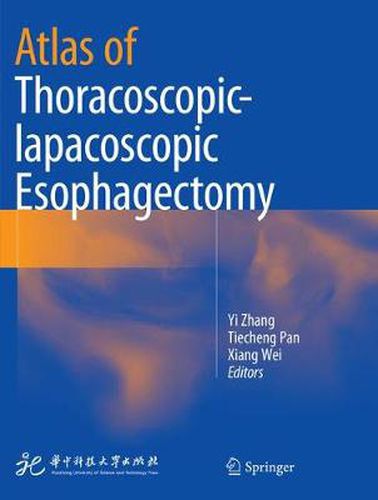Readings Newsletter
Become a Readings Member to make your shopping experience even easier.
Sign in or sign up for free!
You’re not far away from qualifying for FREE standard shipping within Australia
You’ve qualified for FREE standard shipping within Australia
The cart is loading…






This Atlas provides an easy-to-follow operational guide to laparoscopic techniques. It features a wealth of photos to illustrate esophageal carcinoma surgery.
Through step-by-step anatomical photographs, it clearly depicts the Ivor-Lewis operative and Ivor-Lewis-Mckeown operative techniques. Using a consistent format, it addresses the clinical anatomy, pre-operative considerations, operative steps, post-operative care, and pearls and pitfalls to make it easy-to-read.
The authors emphasize the similarities of the principles and steps between open and laparoscopic surgery, which significantly simplifies the transition from one practice to the other. This Atlas also includes a description of anesthesia techniques, a guide to the use of staplers in laparoscopic surgery, and a comparison of the energy sources available for laparoscopic surgery, while also outlining future developments, e.g. the increasing prevalence of robotic surgery for these procedures.
The Atlas offers an essential guide for practitioners and trainees, laparoscopic and thoracoscopic surgeons, and experienced esophageal surgeons who are preparing to change to minimal invasive techniques for the management of esophageal carcinoma. It will also benefit all surgeons who are seeking clear photos detailing how to perform these esophageal carcinoma operations.
$9.00 standard shipping within Australia
FREE standard shipping within Australia for orders over $100.00
Express & International shipping calculated at checkout
This Atlas provides an easy-to-follow operational guide to laparoscopic techniques. It features a wealth of photos to illustrate esophageal carcinoma surgery.
Through step-by-step anatomical photographs, it clearly depicts the Ivor-Lewis operative and Ivor-Lewis-Mckeown operative techniques. Using a consistent format, it addresses the clinical anatomy, pre-operative considerations, operative steps, post-operative care, and pearls and pitfalls to make it easy-to-read.
The authors emphasize the similarities of the principles and steps between open and laparoscopic surgery, which significantly simplifies the transition from one practice to the other. This Atlas also includes a description of anesthesia techniques, a guide to the use of staplers in laparoscopic surgery, and a comparison of the energy sources available for laparoscopic surgery, while also outlining future developments, e.g. the increasing prevalence of robotic surgery for these procedures.
The Atlas offers an essential guide for practitioners and trainees, laparoscopic and thoracoscopic surgeons, and experienced esophageal surgeons who are preparing to change to minimal invasive techniques for the management of esophageal carcinoma. It will also benefit all surgeons who are seeking clear photos detailing how to perform these esophageal carcinoma operations.